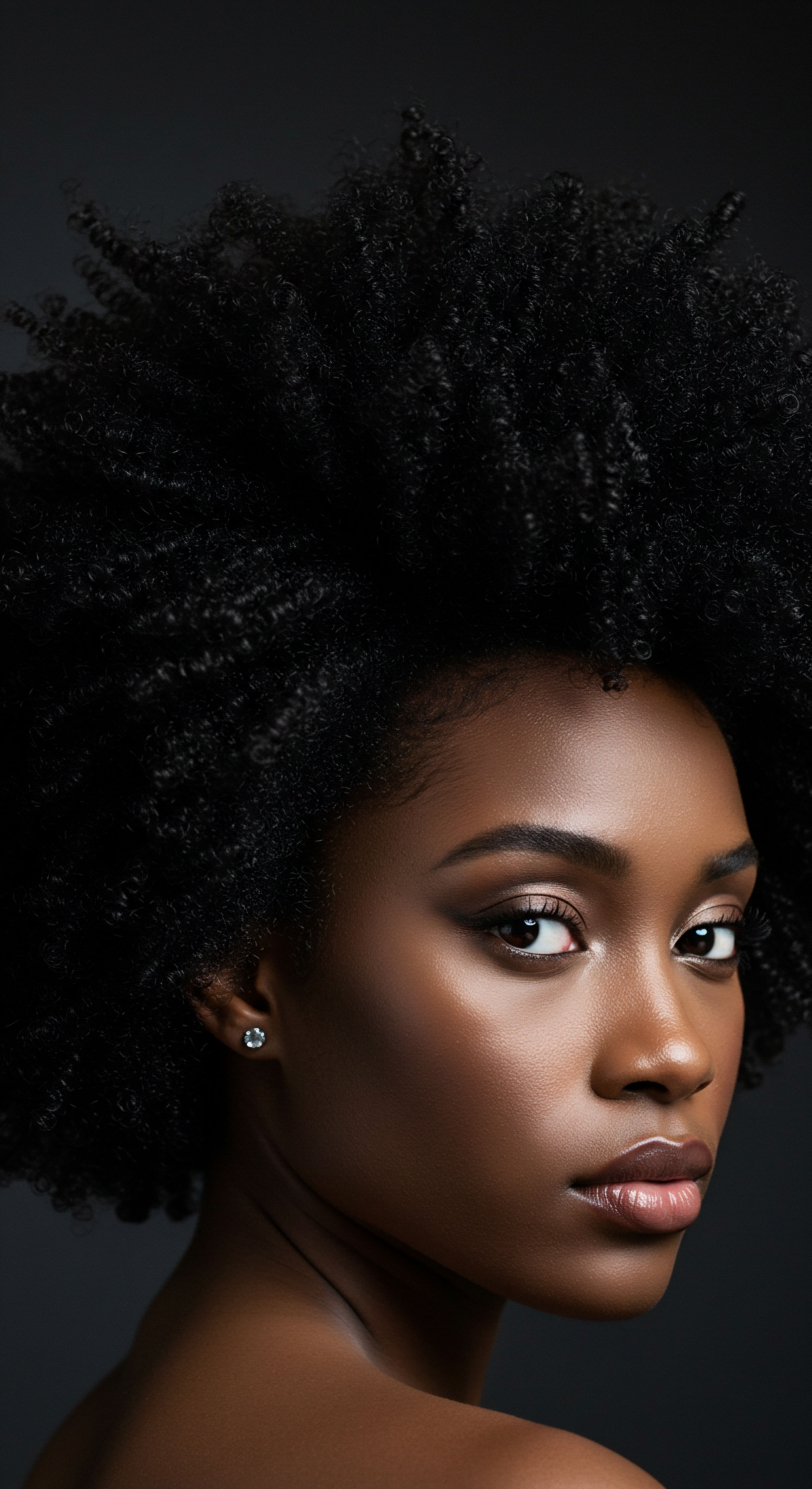
Roots
The quiet hours of night, when the world settles into slumber, hold a unique challenge for our strands. It is a time when the hair, exposed to friction and the subtle, relentless pull of dryness, can lose its vital moisture. This concern, far from being a modern dilemma, echoes through the ages, connecting us to those who lived millennia ago. Long before the advent of contemporary conditioners or elaborate scientific formulations, ancient cultures possessed a profound understanding of hair’s vulnerability during nocturnal rest.
Their methods, born from empirical observation and a deep connection to natural rhythms, reveal a wisdom that transcends time. They recognized that protecting hair as the body reposed was not merely a cosmetic choice, but a fundamental act of care, preserving the hair’s very life force.
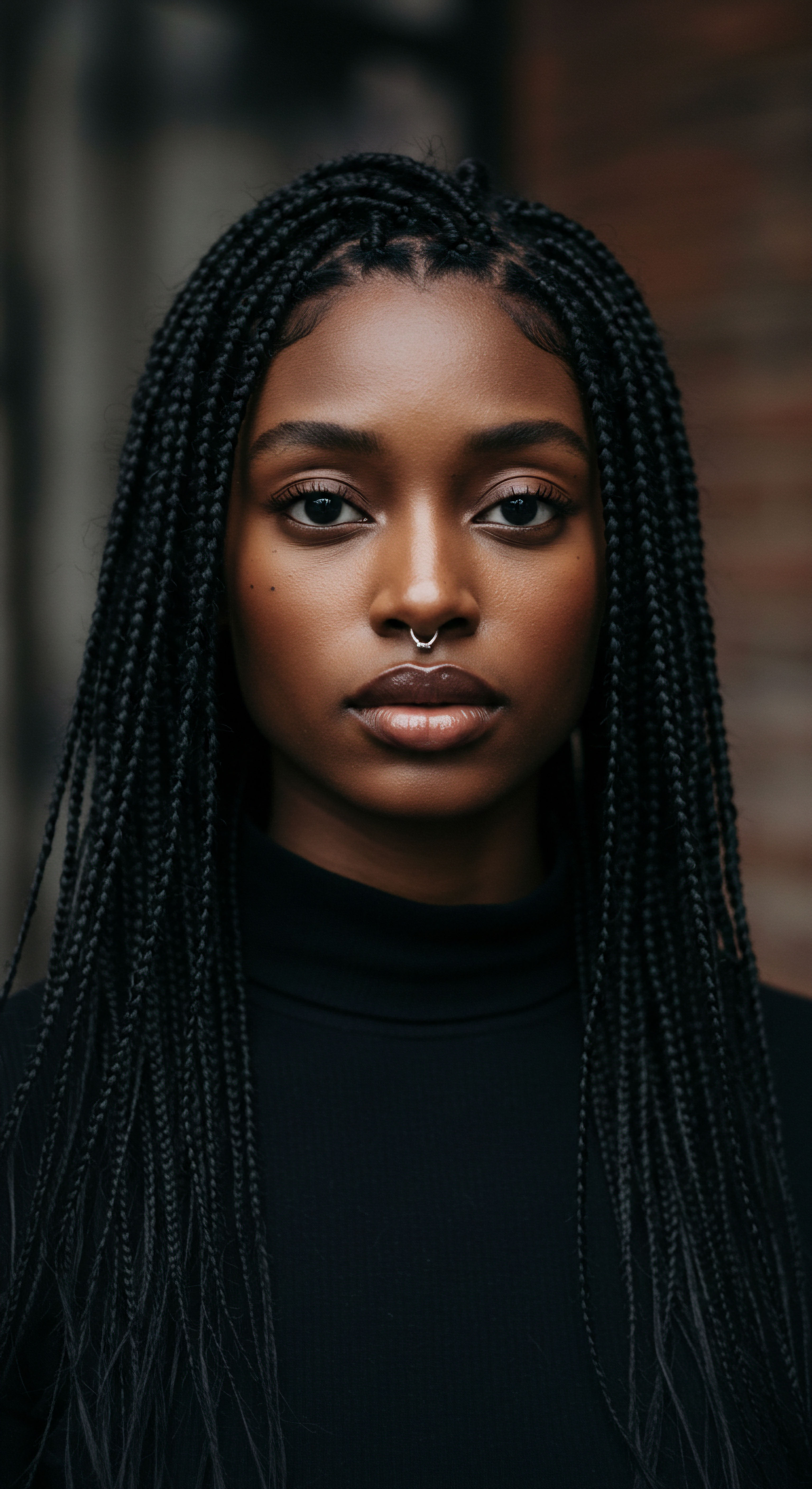
Hair’s Ancient Vulnerability
Across diverse civilizations, the understanding of hair as a living extension of self, susceptible to environmental influences, was palpable. Hair, whether long or short, coiled or straight, was not simply an adornment; it held social, spiritual, and even protective significance. The daily wear and tear, compounded by the harsh realities of ancient climates – from the arid desert winds of Egypt to the humid nights of the Amazon basin – meant that moisture loss was a constant threat. Without the humidifiers and controlled environments of today, ancient peoples intuitively recognized that the night, with its prolonged periods of contact with abrasive surfaces like rough sleeping mats or uncovered ground, presented a particular risk for hair desiccation.
Ancient cultures understood hair’s nightly moisture loss, viewing its protection as a fundamental act of care.
The concept of hair’s susceptibility to dryness was not abstract; it was a lived experience. Dry hair could lead to breakage, dullness, and a compromised appearance, which, in many societies, carried implications beyond mere aesthetics. A healthy head of hair often signaled vitality, status, and even spiritual alignment. This societal weight placed upon hair’s condition spurred the development of ingenious methods to safeguard its integrity, especially during the hours of unconscious rest.

The Primal Need for Moisture
Moisture, the very essence of pliable, resilient hair, was sought through a variety of natural sources. Ancient cultures, living in close harmony with their environments, turned to the plant kingdom for solutions. Oils extracted from seeds, nuts, and fruits became staples in their hair care regimens.
These botanical elixirs, rich in fatty acids and nourishing compounds, offered a shield against the dehydrating effects of night. The application of these oils was not haphazard; it was often a deliberate, almost ritualistic practice, underscoring the value placed on hair’s well-being.
Consider the simple yet profound act of anointing the hair before sleep. This practice, common across continents, served as a preventative measure, coating the hair shaft and scalp with a protective layer. It was a recognition that just as the body required rest and nourishment, so too did the hair need its own form of replenishment to endure the hours of darkness. The effectiveness of these ancient emollients speaks to an intuitive grasp of basic hair science, even without the modern vocabulary to describe it.
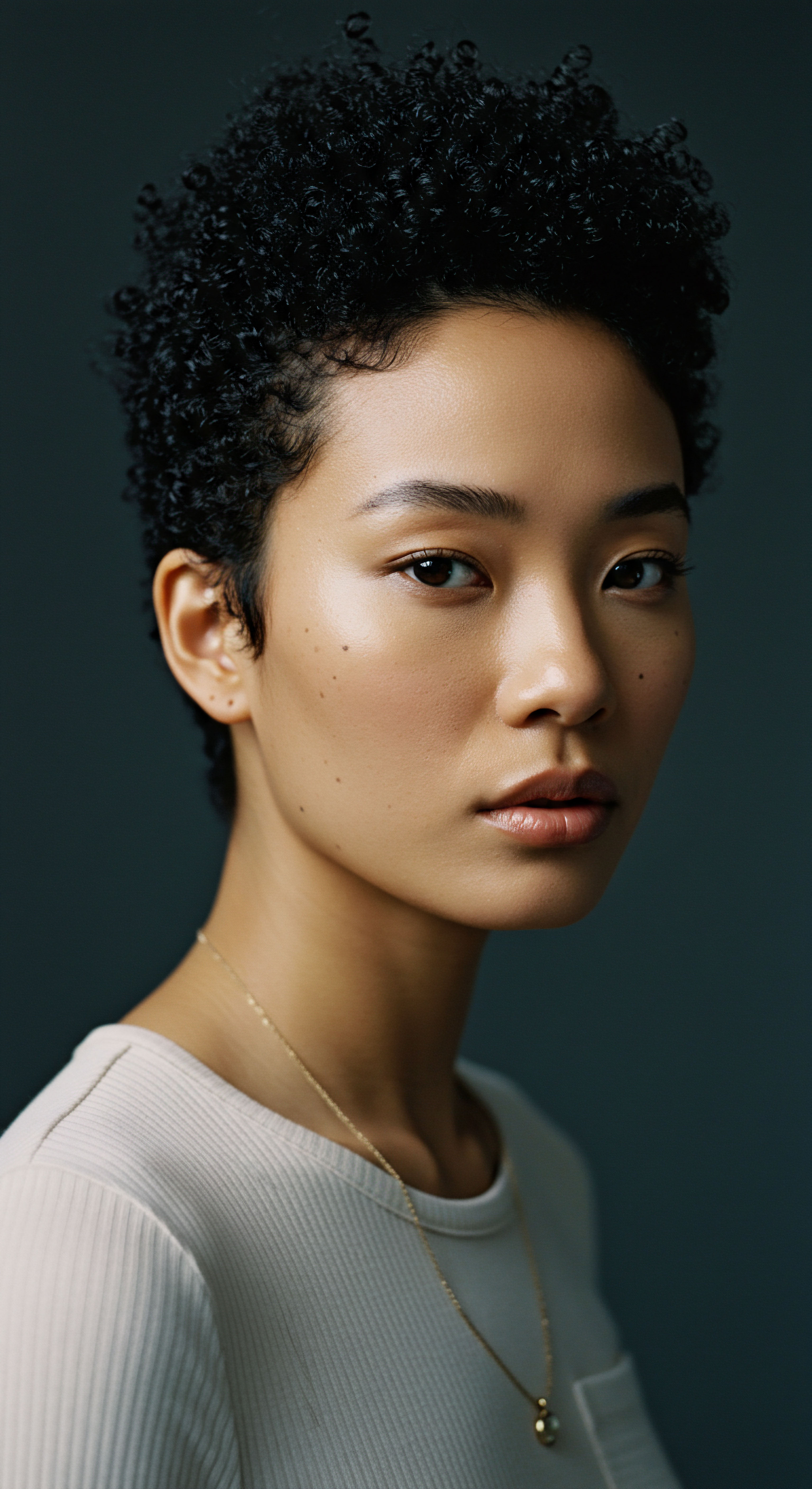
Understanding the Hair Fiber
While ancient peoples lacked microscopes to observe the cuticle layers or the intricate protein structures of hair, their sustained observations led to practical knowledge about its behavior. They understood that certain textures, particularly those with a more open cuticle or a naturally coiled pattern, were more prone to dryness. This empirical understanding guided their choices of ingredients and techniques.
The recognition of hair’s natural tendencies meant that solutions were tailored. For instance, the use of heavier, more occlusive butters for highly textured hair, or lighter oils for finer strands, demonstrates a nuanced approach to hair fiber care. This bespoke method, refined over generations, allowed for the development of highly effective, culturally specific solutions to the universal challenge of nocturnal hair dryness.
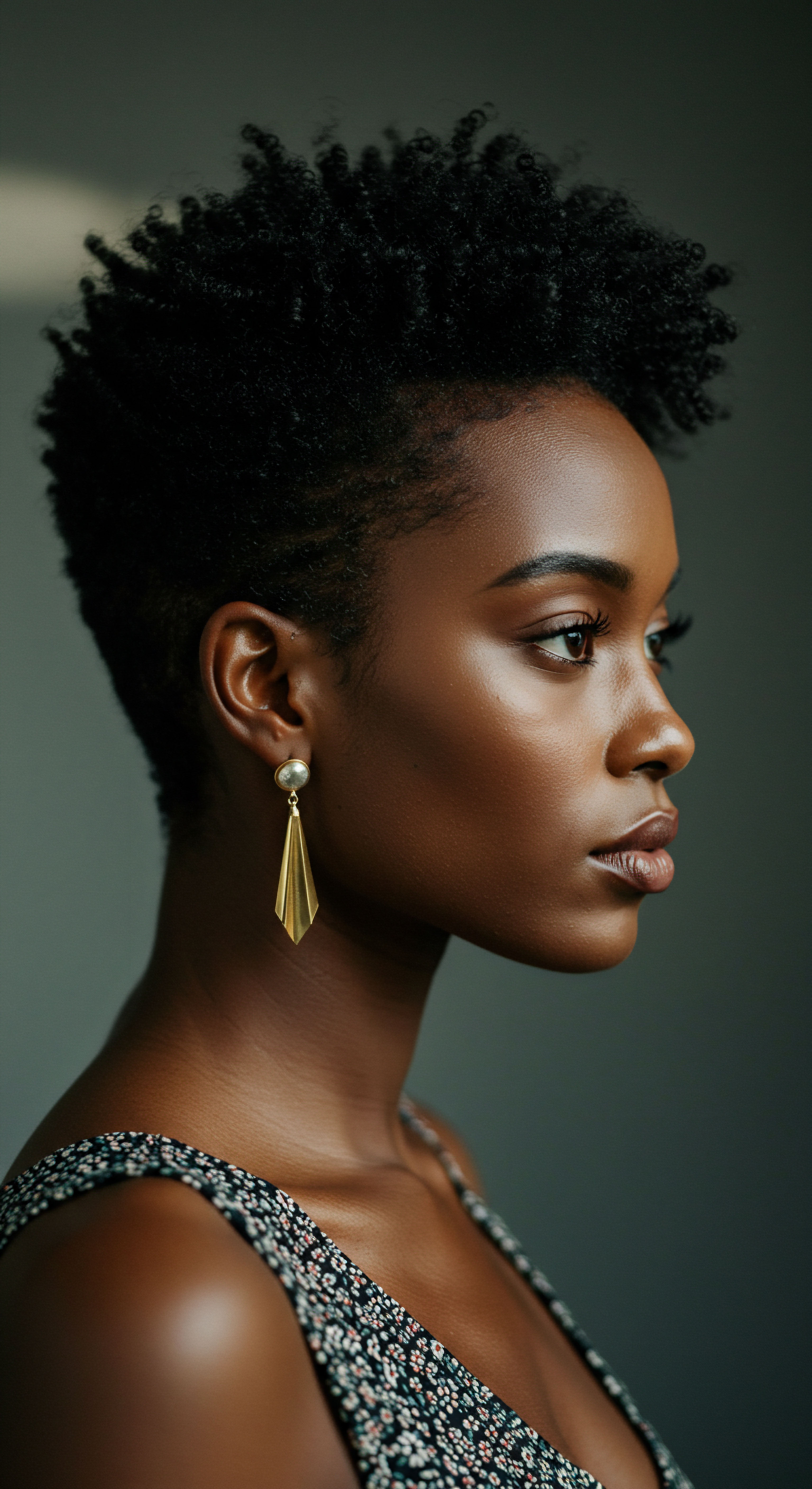
Ritual
As the sun dipped below the horizon, ancient households across the globe engaged in practices designed to preserve the hair’s moisture and integrity through the long hours of night. These were not mere acts of grooming; they were often deeply embedded in daily life, embodying a practical wisdom passed down through generations. Stepping into this realm of ancestral practices reveals a rich tapestry of methods, from the generous application of botanical oils to the clever use of coverings and intricate styling techniques.

Anointing Oils of the Ancients
The application of natural oils stands as a cornerstone of ancient nighttime hair care. These were not simply for scent or shine; their primary role was to seal in moisture and protect the hair shaft from environmental stressors. In ancient Egypt, for example, the use of oils like Castor Oil and Almond Oil was prevalent, not only for their moisturizing properties but also to promote hair growth and shine.
Cleopatra herself, a figure synonymous with ancient beauty, is believed to have utilized olive oil for its nourishing qualities. This practice extended across the Mediterranean, with olive oil serving as a cherished hair treatment in Greek culture, valued for its ability to moisturize, add shine, and improve manageability.
Beyond the Mediterranean, other botanical wonders were revered. In ancient India, the Ayurvedic tradition held oils like Sesame Oil and Coconut Oil in high esteem, often blended with herbs such as amla, shikakai, and neem to create potent treatments. These concoctions were massaged into the scalp and hair, often left on overnight, a practice that has persisted for millennia. West African communities, too, held a deep respect for the protective qualities of natural butters.
Shea Butter, derived from the shea nut tree, has been used for centuries to moisturize and shield both skin and hair from harsh climates. Historical accounts suggest that even figures like Cleopatra and the Queen of Sheba had shea butter transported in clay jars to protect their skin and hair in arid desert environments.
Across diverse ancient cultures, botanical oils served as primary agents for nocturnal hair moisture and protection.
The deliberate choice of these natural emollients was backed by empirical evidence. The high lauric acid content in coconut oil, for instance, provides deep moisturization and helps reduce protein loss, a benefit validated by modern scientific studies. Similarly, olive oil’s richness in monounsaturated fats and antioxidants nourishes the scalp and strengthens hair.
The women of the Basara Arab tribe in Chad, for example, use Chebe Powder mixed with natural oils and butter as a paste applied to their hair, avoiding the scalp directly, to minimize hair breakage and promote length, a practice rooted in the dry desert conditions. This ancient treatment from Chad is noted for strengthening hair, reducing breakage, and aiding in length retention.
| Oil or Butter Olive Oil |
| Cultural Origin Mediterranean (Egypt, Greece, Rome) |
| Primary Benefits for Night Care Moisturizing, conditioning, adds shine, improves manageability, nourishes scalp. |
| Oil or Butter Castor Oil |
| Cultural Origin Ancient Egypt, India |
| Primary Benefits for Night Care Promotes hair growth, enhances shine, moisture retention. |
| Oil or Butter Almond Oil |
| Cultural Origin Ancient Egypt, Ayurvedic |
| Primary Benefits for Night Care Hydrates, strengthens, often used with castor oil. |
| Oil or Butter Coconut Oil |
| Cultural Origin Ancient India (Ayurveda), Tropical Regions |
| Primary Benefits for Night Care Deep moisturization, reduces protein loss, anti-inflammatory. |
| Oil or Butter Sesame Oil |
| Cultural Origin Ancient India (Ayurveda), Mesopotamia |
| Primary Benefits for Night Care Nourishes scalp and hair, prevents hair loss, promotes relaxation. |
| Oil or Butter Shea Butter |
| Cultural Origin West and Central Africa |
| Primary Benefits for Night Care Moisturizes, protects from harsh elements, holds style, soothes dry scalp. |
| Oil or Butter Murumuru Butter |
| Cultural Origin Amazon Rainforest |
| Primary Benefits for Night Care Intense hydration, frizz control, enhances elasticity and shine. |

The Protective Veil of Night
Beyond topical applications, ancient cultures often employed physical barriers to shield hair during sleep. Head coverings, in various forms, were commonplace. These coverings served a dual purpose ❉ preventing moisture loss to the environment and reducing friction against rough sleeping surfaces.
In many African and Afro-Caribbean cultures, the tradition of using Silk Hair Wraps or Head Ties to protect hair from damage and breakage overnight has a rich history. While modern satin bonnets are a recent iteration, the underlying principle of a smooth, non-absorbent fabric protecting hair from friction and moisture absorption by cotton pillowcases remains consistent. These coverings also helped maintain intricate hairstyles, saving precious time and effort. The practice of covering hair at night was not only practical but also held cultural significance, sometimes signifying status, marital standing, or religious adherence.
In Mesopotamia, women often wore their hair long, braided, and piled on top of the head, secured with a net or scarf. This not only helped maintain the style but also provided a layer of protection during rest. The careful wrapping of hair before sleep was a testament to the value placed on hair’s condition and the understanding that exposure to the elements, even indoors, could lead to dryness.
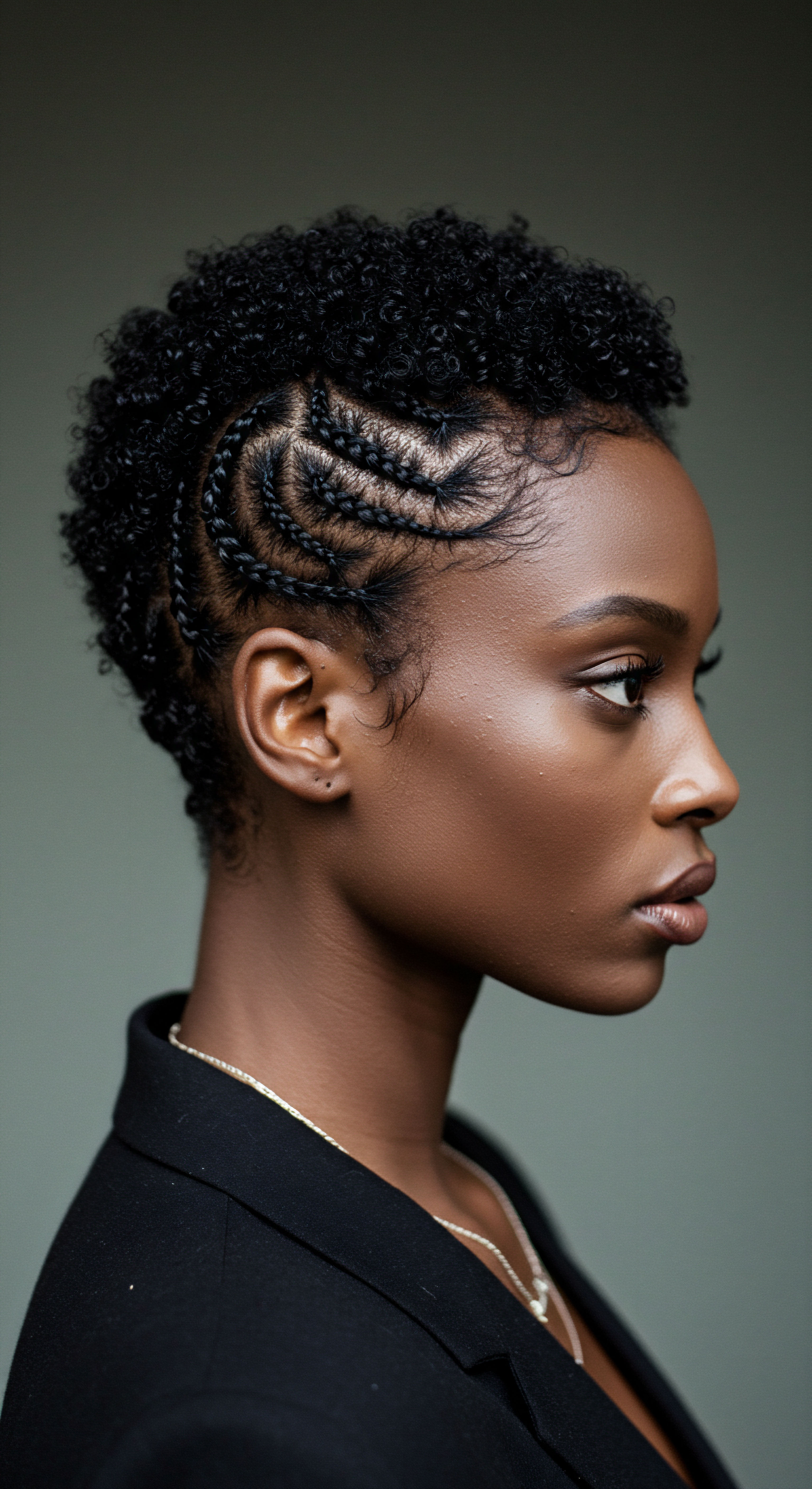
Braiding and Bundling for Preservation
Another widely adopted strategy for nocturnal hair management involved specific styling techniques. Braiding, twisting, and bundling the hair before sleep minimized tangling, breakage, and surface area exposure, thereby reducing moisture evaporation.
- Braiding ❉ Simple or intricate braids kept hair contained, reducing friction against bedding. This was particularly beneficial for longer hair or textured hair prone to knots.
- Twisting ❉ Similar to braiding, two-strand twists or larger sections twisted together provided a protective coil, especially effective for curly and coily textures.
- Bundling ❉ Gathering hair into a loose bun or knot at the crown or nape of the neck also served to protect the ends, which are often the most vulnerable to dryness and damage.
These methods were not only practical but often aesthetic, transforming hair from a daily adornment into a protected form for the night. The foresight to prepare hair for sleep, rather than leaving it unbound and vulnerable, speaks volumes about the holistic approach to hair care in ancient societies. The combination of nourishing oils with protective styling and coverings created a comprehensive system that addressed hair dryness from multiple angles, ensuring strands remained supple and strong.

Relay
How did the intricate dance of ancient hair care, particularly its nocturnal aspects, extend beyond mere physical preservation to touch the very spirit of a community? To truly comprehend the depths of ancient practices, we must consider the broader cultural, spiritual, and environmental contexts that shaped them. The seemingly simple act of anointing hair or covering it before sleep often carried layers of meaning, reflecting societal values, spiritual beliefs, and an acute attunement to the natural world.

Hair as a Cultural Repository
Hair, across many ancient civilizations, was far more than just a biological appendage; it was a profound symbol. It could signify social status, marital standing, age, spiritual connection, or even a person’s political allegiance. The care bestowed upon it, therefore, was not a trivial matter but a reflection of one’s place within the collective and a testament to shared cultural identity. The practices of preserving hair at night, then, contributed to the longevity of these visual markers, allowing them to retain their meaning and beauty for the waking world.
For instance, in ancient Greece, hair was strongly associated with growth, moisture, and wetness, considered preconditions for any kind of development. The careful maintenance of hair, including its protection during sleep, aligned with a broader cultural reverence for vitality and well-being. Similarly, in many African societies, headwraps and specific hairstyles were not only protective but also acted as visual narratives, conveying complex messages about the wearer’s identity and community.
Ancient hair care practices were deeply intertwined with cultural identity, social status, and spiritual beliefs.
The persistence of hair oiling, particularly in South Asian cultures, offers a compelling example of this cultural depth. The Ayurvedic practice, dating back 4000-5000 years, involves massaging warm herbal oil into the scalp and hair, often left on overnight. This tradition, documented in ancient texts like the Rig Veda and Atharva Veda, describes goddesses with hair anointed with lotus oil and includes hymns for hair growth.
The continuity of such a practice, with limited changes over millennia, speaks to its profound cultural embedding and perceived efficacy. This is not simply about preventing dryness; it is about honoring ancestral wisdom and maintaining a connection to a living heritage.

Beyond the Physical ❉ Spiritual Connections
In numerous ancient cultures, hair held spiritual significance, sometimes considered a conduit for energy, a link to the divine, or a repository of one’s essence. Protecting hair at night could, therefore, extend to safeguarding one’s spiritual well-being. The application of certain oils or the wearing of specific coverings might have been accompanied by prayers, intentions, or rituals to invoke blessings or ward off negative influences during vulnerable sleep states.
The use of certain plant extracts in hair care was often tied to their perceived energetic or spiritual properties, not solely their physical benefits. For example, some herbs used in Ayurvedic hair oils were also considered to calm nerves and reduce stress, thereby addressing holistic well-being that could indirectly impact hair health. This holistic perspective, where the physical, mental, and spiritual were seen as interconnected, shaped the approach to nocturnal hair care.

The Enduring Wisdom of Ancient Methods
The efficacy of ancient hair care methods, particularly those aimed at preventing nocturnal dryness, finds surprising corroboration in modern understanding. While the ancients lacked the scientific language of fatty acids or cuticle layers, their empirical observations led them to practices that align with contemporary trichology.
For instance, the use of Smooth Coverings like silk or satin, widely used in various cultures to protect hair at night, is now scientifically recognized for its ability to reduce friction and prevent moisture absorption, unlike coarser fabrics such as cotton. A recent analysis by Self Magnet (2023) highlights how African sleep caps, made from satin or silk, reduce friction against hair, preventing tangles and damage, and crucially, help retain natural oils, thus maintaining hair’s moisture balance throughout the night. This underscores a long-standing understanding that physical protection during sleep is as vital as topical treatments.
Consider the impact of humidity on hair. In arid regions, the air itself draws moisture from strands, particularly overnight. The ancient practice of oiling the hair provided an occlusive barrier, slowing this evaporative process.
In a study on hair oiling, it was noted that “the hair oil on the outer surface acts as protection against external aggressors such as water, pollution and other products. It also helps to preserve the building blocks of hair (protein and lipids) hence leaving hair less porous and stronger.” This statement, though from a modern context, reflects the very essence of what ancient practitioners achieved through their diligent application of natural oils.
| Aspect of Protection Moisture Sealing |
| Ancient Practice Applying botanical oils (e.g. olive, coconut, shea). |
| Modern Scientific Rationale Oils create an occlusive barrier, reducing transepidermal water loss from scalp and hair shaft. Fatty acids in oils penetrate hair, reducing protein loss and increasing hydrophobicity. |
| Aspect of Protection Friction Reduction |
| Ancient Practice Using smooth head coverings (e.g. silk, early forms of head wraps). |
| Modern Scientific Rationale Smooth fabrics minimize mechanical friction between hair and sleeping surfaces, preventing cuticle damage, tangles, and breakage. |
| Aspect of Protection Structural Integrity |
| Ancient Practice Braiding, twisting, or bundling hair before sleep. |
| Modern Scientific Rationale Contains hair, reduces exposure to environmental stressors, minimizes tangling and knot formation, which can lead to breakage. |
| Aspect of Protection Scalp Health |
| Ancient Practice Scalp massage with oils. |
| Modern Scientific Rationale Stimulates blood circulation to hair follicles, promoting nutrient delivery and waste removal. Oils also provide antimicrobial or anti-inflammatory benefits to the scalp. |
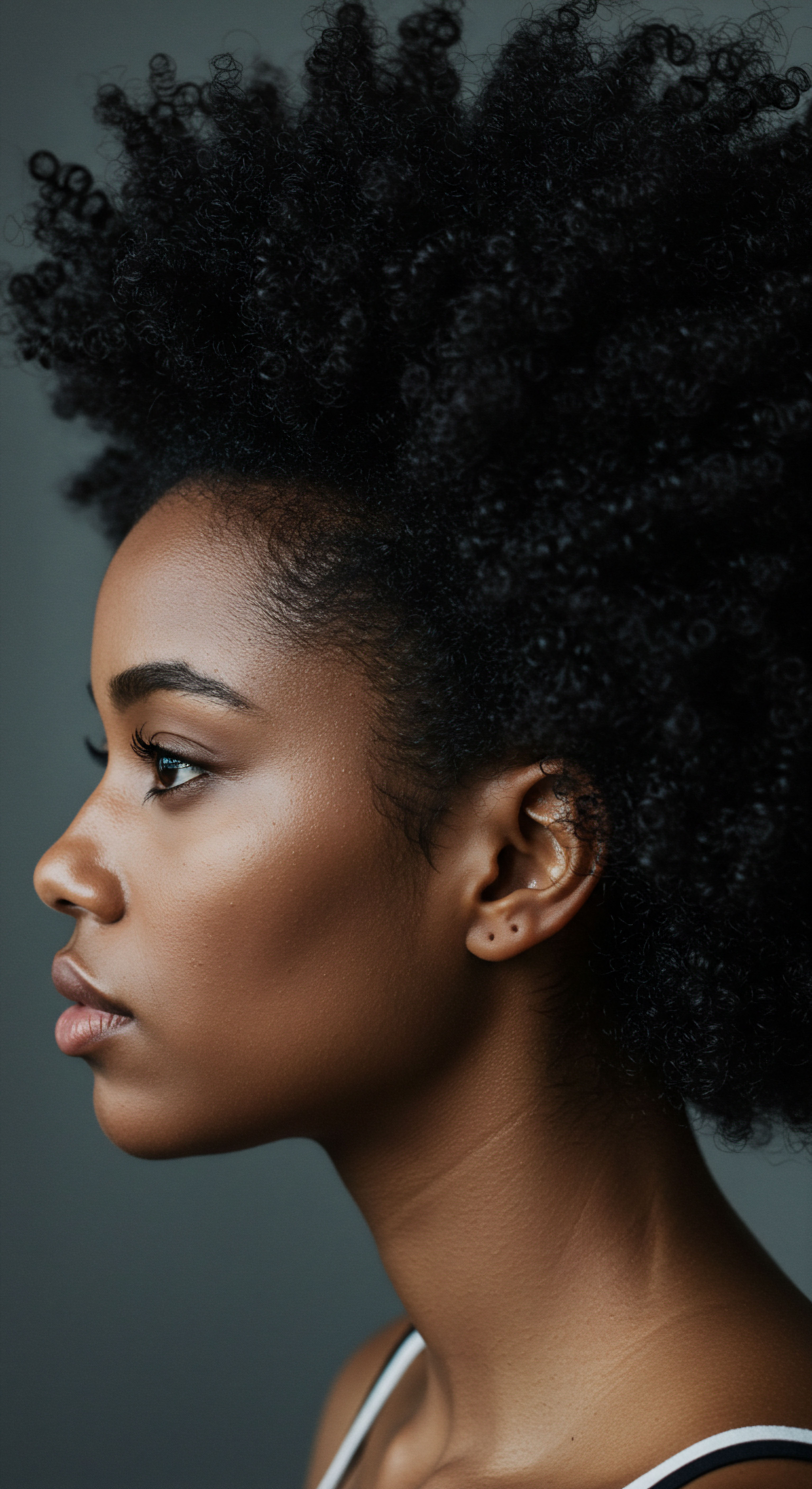
Environmental Adaptation and Resourcefulness
The solutions developed by ancient cultures were intimately tied to the resources available in their local environments. This geographical influence meant a diverse array of plant-based ingredients found their way into hair care. From the arid plains of Africa, where shea butter trees flourished, to the olive groves of the Mediterranean, or the tropical abundance of the Amazon rainforest with its murumuru palms, local flora provided the answers.
This resourcefulness was not simply about using what was at hand; it was about discerning which natural elements offered the most effective properties for hair care, particularly for nighttime protection. The knowledge of these plants, their extraction methods, and their application was a precious commodity, often passed down orally or through communal practice. This deep ecological intelligence, coupled with a nuanced understanding of hair’s needs, allowed ancient societies to effectively combat dryness during nocturnal rest, long before the age of synthetic solutions.

Reflection
The quiet ingenuity of ancient cultures, in their gentle care of hair during the hours of sleep, offers a profound lesson. Their methods, seemingly simple, reveal a deep reverence for the body and its connection to the rhythms of nature. It is a reminder that the pursuit of healthy, resilient hair is not a modern invention, but a timeless endeavor, rooted in ancestral wisdom and an intuitive understanding of our strands’ delicate balance. The echoes of their nighttime rituals, from the anointing of oils to the embrace of protective coverings, resonate still, inviting us to consider the enduring power of mindful care in our own contemporary routines.

References
- Speight, Alexanna. The Lock of Hair ❉ Its History, Ancient and Modern, Natural and Artistic. Hansebooks, 2016.
- Harlow, Mary, and Lena Larsson Lovén. A Cultural History of Hair in Antiquity. Bloomsbury Academic, 2022.
- Tharps, Lori L. and Ayana Byrd. Hair Story ❉ Untangling the Roots of Black Hair in America. St. Martin’s Press, 2016.
- Weitz, Rose. Rapunzel’s Daughters ❉ What Women’s Hair Tells Us about Women’s Lives. Farrar, Straus and Giroux, 2004.
- Hiltebeitel, Alf, and Barbara D. Miller. Hair ❉ Its Power and Meaning in Asian Cultures. SUNY Press, 1998.
- Blanco-Dávila, F. “Beauty and the body ❉ the origins of cosmetics.” Plastic and Reconstructive Surgery, 2000.
- Diop, Cheikh Anta. The African Origin of Civilization ❉ Myth or Reality. Lawrence Hill Books, 1974.
- Karri, Swathi Priya, and Abhishek Sam Jeremy Devarapalli. “The pursuit of beauty through the ages ❉ A historic perspective on Cosmetics from “Antiquity to Modern Times”.” Revolution of Cosmetics, Cambridge Scholars Publishing, 2025.
- Sayce, A. H. Babylonians And Assyrians ❉ Life And Customs. Charles Scribner’s Sons, 1900.